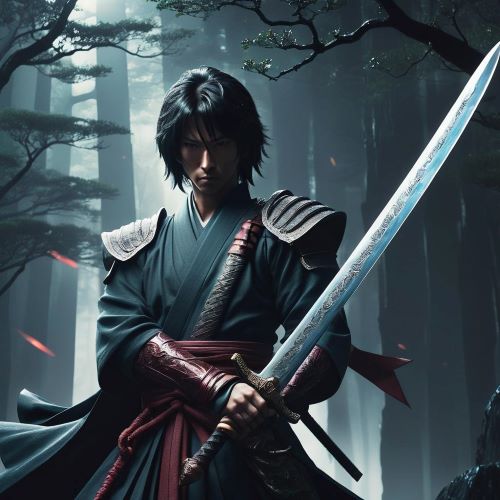The Imperial Regalia of Japan: The Sacred Sword, Mirror, and Jewel
The Imperial Regalia of Japan, also known as the Three Sacred Treasures, are among the most mysterious and revered artifacts in world mythology. Shrouded in secrecy, these legendary objects represent the divine legitimacy of the Japanese Emperor and link Japan’s imperial line directly to the gods. Though rarely seen by the public and often hidden during enthronement ceremonies, their influence on Japanese culture, history, and spirituality is immeasurable.
The three sacred objects include a sword, a mirror, and a jewel, each carrying deep symbolic meaning. Together, they are believed to have been handed down from the sun goddess Amaterasu, the supreme deity in Shinto mythology, to her descendants. Let’s explore these three iconic treasures that make up the Imperial Regalia of Japan.
1. Kusanagi-no-Tsurugi – The Sword of Valor
The first of the Imperial Regalia of Japan is the sword known as Kusanagi-no-Tsurugi, or “Grass-Cutting Sword.” According to legend, it was originally discovered inside the body of the fearsome eight-headed serpent Yamata-no-Orochi by the storm god Susanoo. He later presented the blade to his sister, the sun goddess Amaterasu, as a token of reconciliation.
This sword symbolizes valor and courage, qualities expected of a just ruler. Over time, it became associated with legendary feats, including Prince Yamato Takeru’s survival story, where he used the sword to control flames during a deadly ambush.
The actual sword is believed to be kept at Atsuta Shrine in Nagoya, though no outsider has ever verified its existence. Its mythical nature only adds to its aura, making it more than just a weapon—it is a divine instrument linking the emperor to the gods.
2. Yata no Kagami – The Mirror of Wisdom
The second treasure of the Imperial Regalia of Japan is the Yata no Kagami, an ornate bronze mirror. In Shinto tradition, this mirror is one of the most sacred objects, representing wisdom, truth, and honesty. Its origins are tied to one of the most famous myths in Japanese mythology—the return of Amaterasu from her self-imposed exile inside a cave.
When Amaterasu hid away, plunging the world into darkness, the gods placed the mirror outside the cave. Curious to see her own reflection, the goddess stepped out, bringing back light to the world. This story forever established the mirror as a symbol of clarity and divine guidance.
Today, the mirror is enshrined at Ise Grand Shrine, Japan’s most sacred Shinto shrine. It remains unseen by the public, with only the highest priests and the imperial family allowed access during sacred ceremonies.
3. Yasakani no Magatama – The Jewel of Benevolence
The third treasure is the Yasakani no Magatama, a curved jewel or bead, symbolizing benevolence and compassion. Magatama beads have been crafted in Japan since prehistoric times, often used in rituals and as protective charms.
In mythology, this sacred jewel also played a role in the story of Amaterasu’s cave retreat. The gods strung together dazzling magatama jewels to lure her out, making the jewel a symbol of allure, harmony, and divine beauty.
Currently, the jewel is said to be housed at the Imperial Palace in Tokyo, where it is part of imperial enthronement ceremonies. Unlike the sword and mirror, the jewel has been more widely displayed in historical records, reinforcing its role as both a sacred and cultural artifact.
Symbolism and Legacy of the Imperial Regalia of Japan
Together, the sword, mirror, and jewel embody the core virtues expected of Japan’s rulers: valor (Kusanagi-no-Tsurugi), wisdom (Yata no Kagami), and benevolence (Yasakani no Magatama). These qualities form the foundation of imperial rule and have been passed down through generations as a divine mandate.
The regalia’s secrecy is deliberate—never displayed to the public and often hidden during rituals—to preserve their mystique and sacred aura. Even during modern enthronement ceremonies, only selected Shinto priests and members of the imperial household are permitted to witness them.
Beyond their political symbolism, these treasures remain powerful cultural icons. They continue to influence Japanese art, literature, and modern storytelling, often appearing in anime, manga, and video games as legendary relics of divine power.
Conclusion
The Imperial Regalia of Japan are not merely artifacts but sacred symbols that connect the Japanese imperial family to divine authority. With origins tracing back to the gods themselves, these treasures embody timeless virtues and continue to shape Japan’s cultural identity. Though hidden from public eyes, their presence remains at the heart of Japan’s imperial tradition and mythology, standing as a testament to one of the world’s most enduring royal lineages.
No posts were found.









